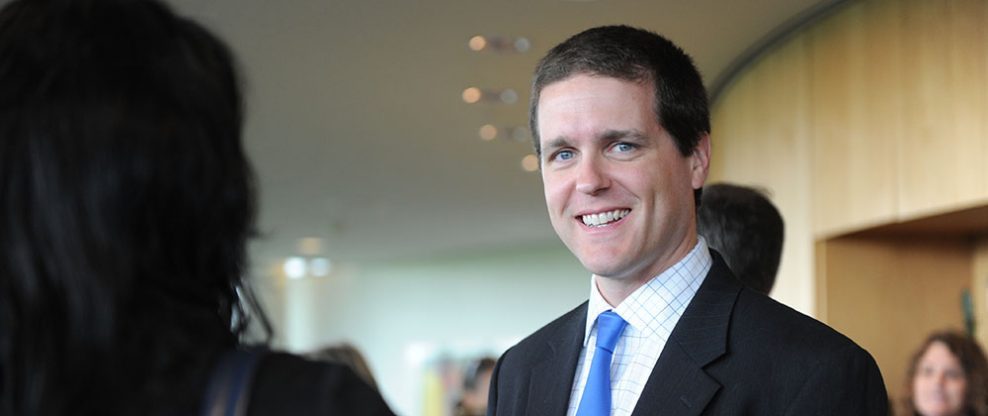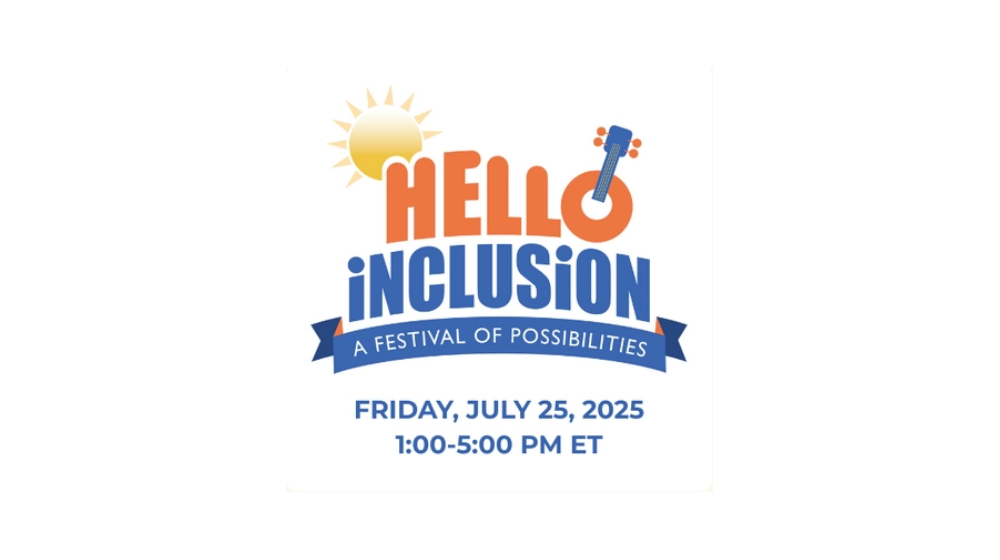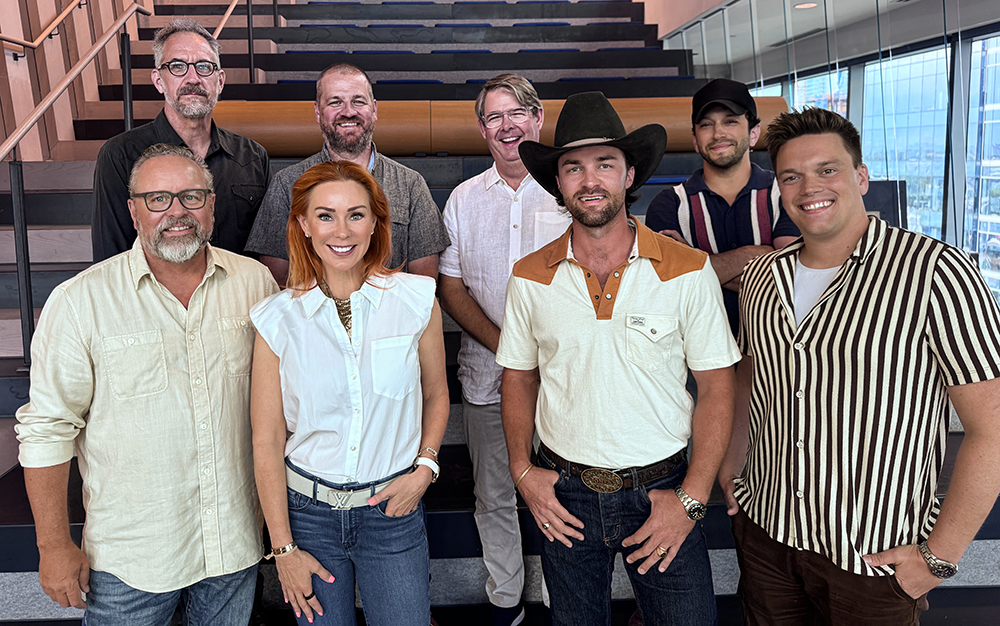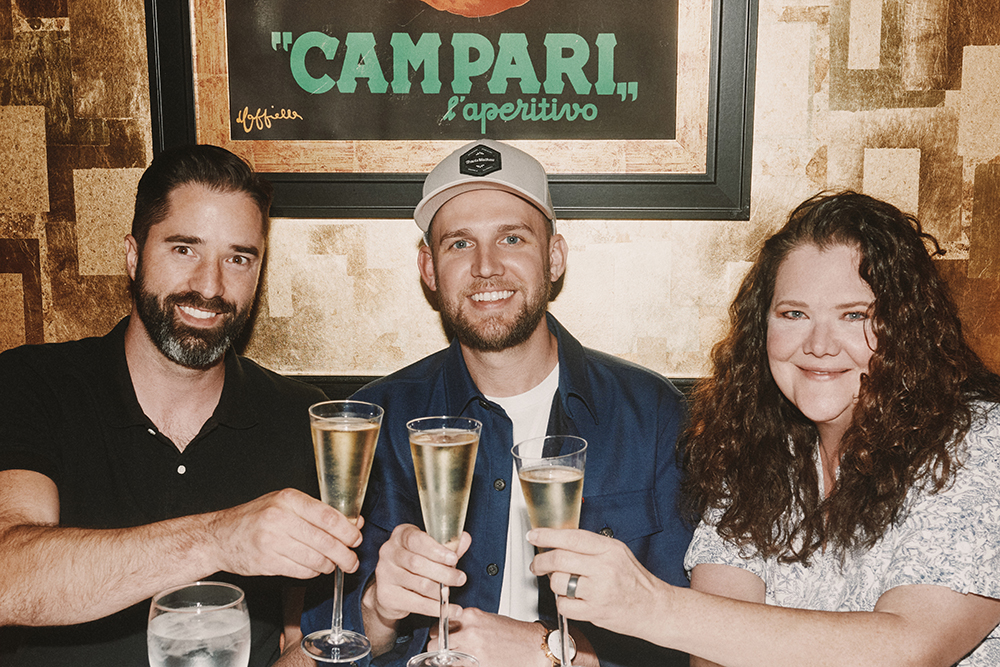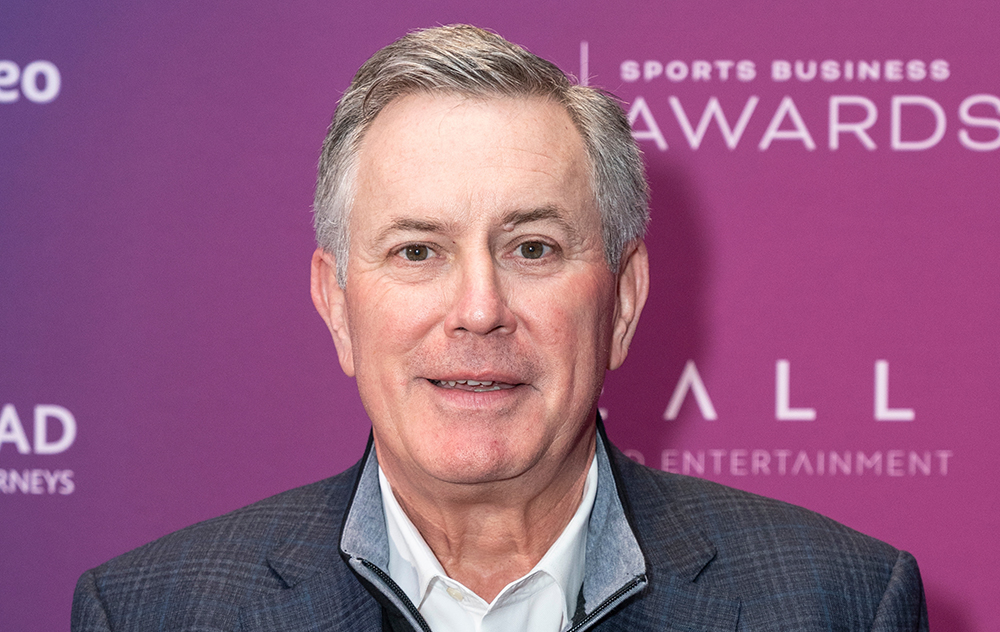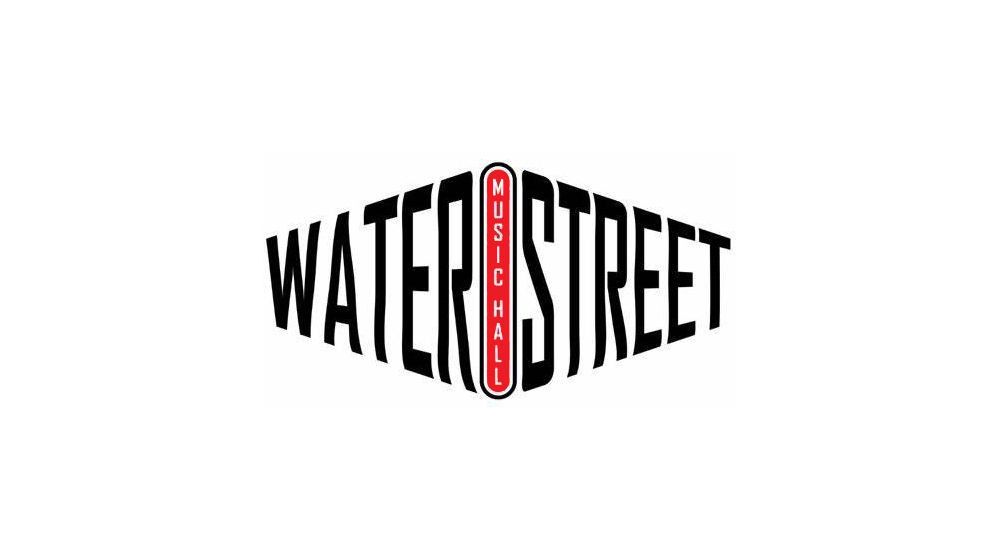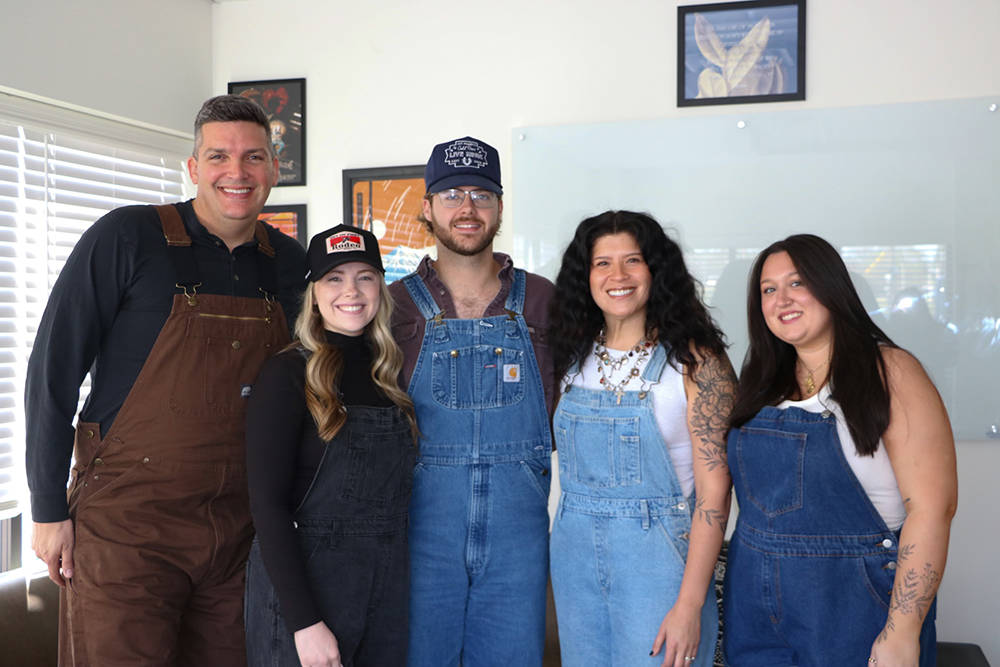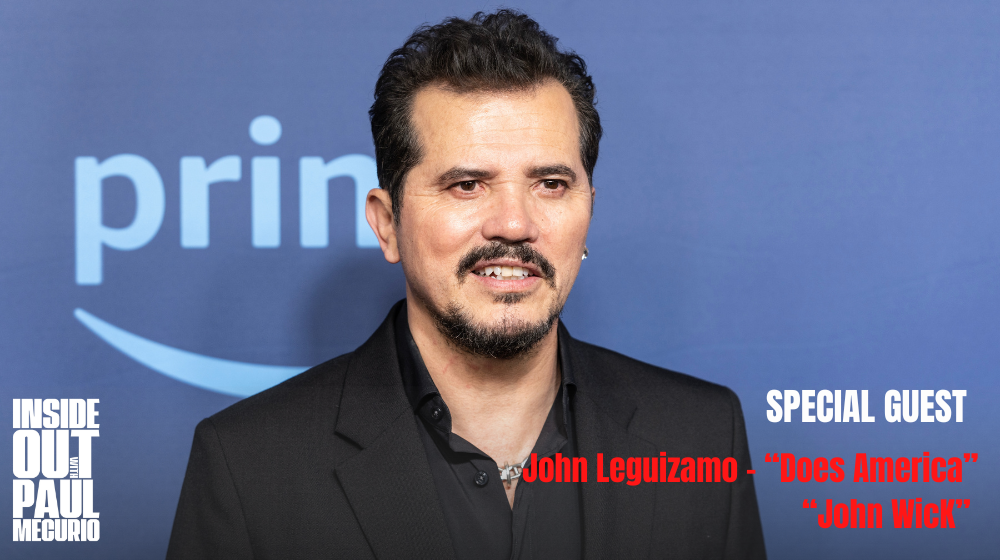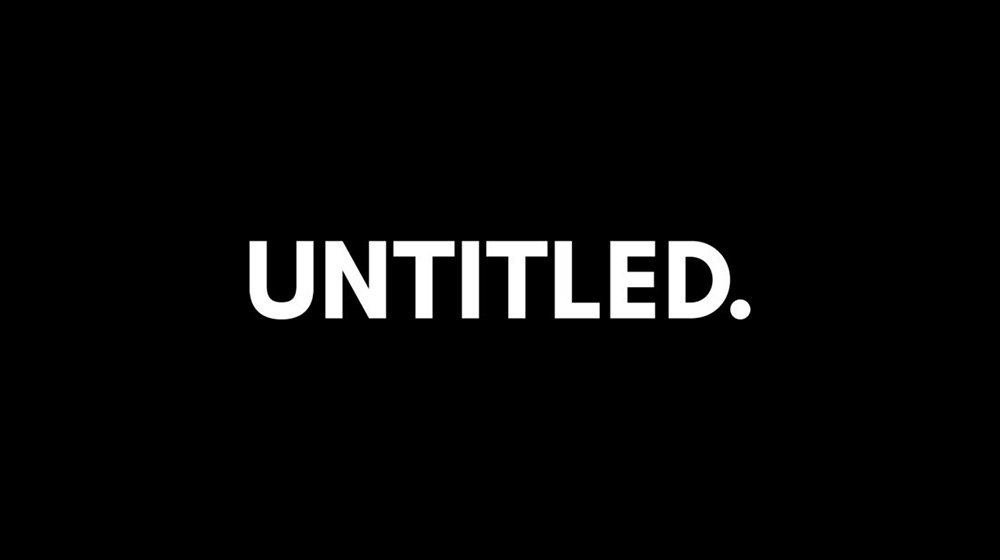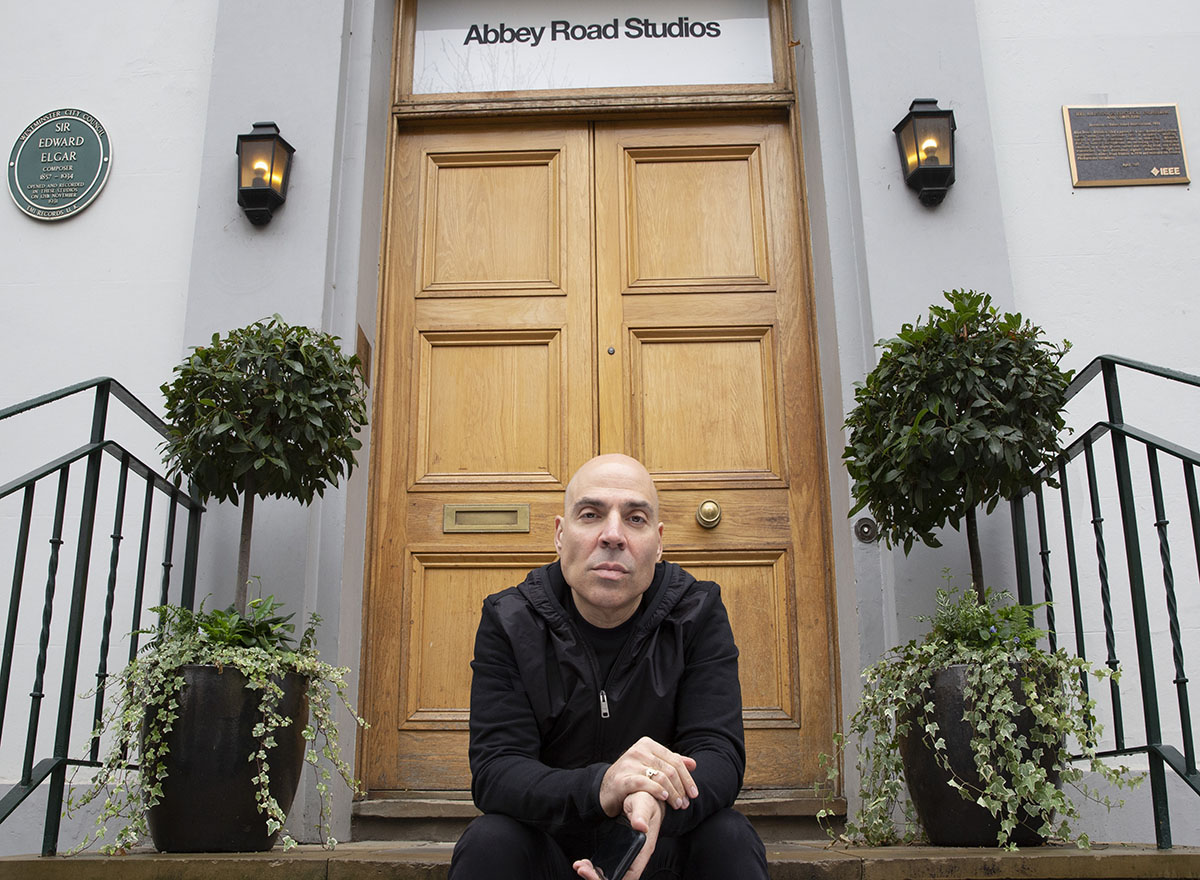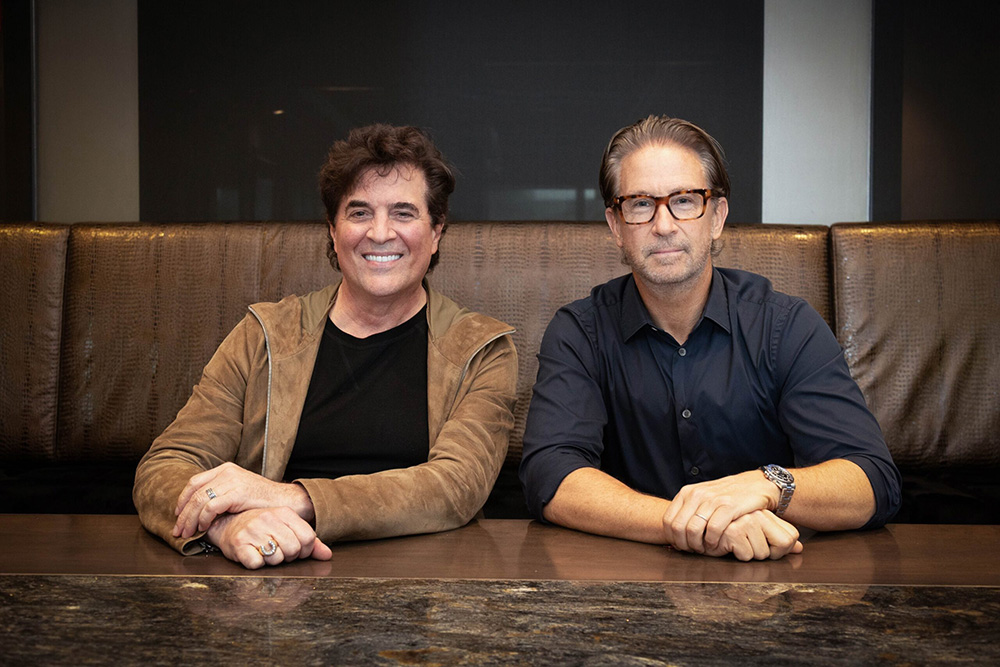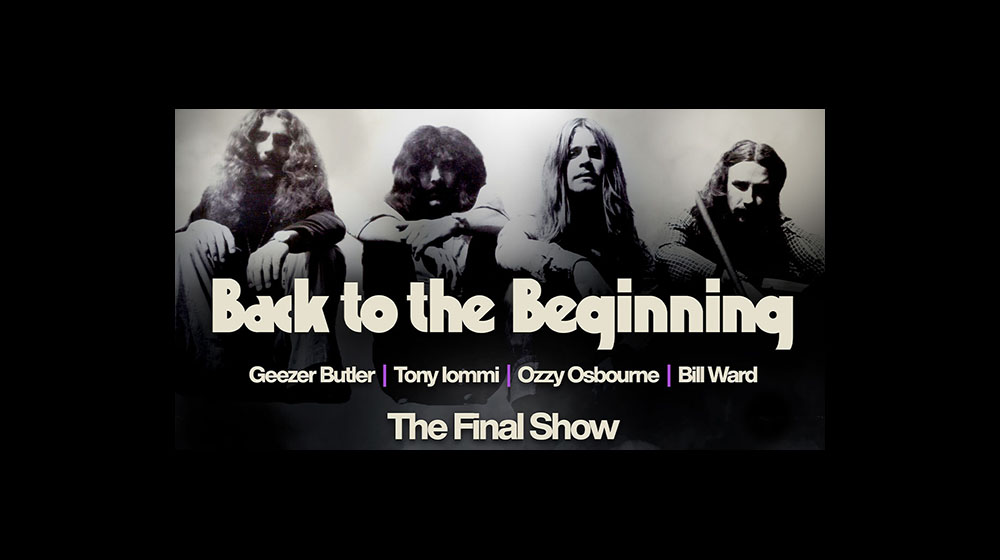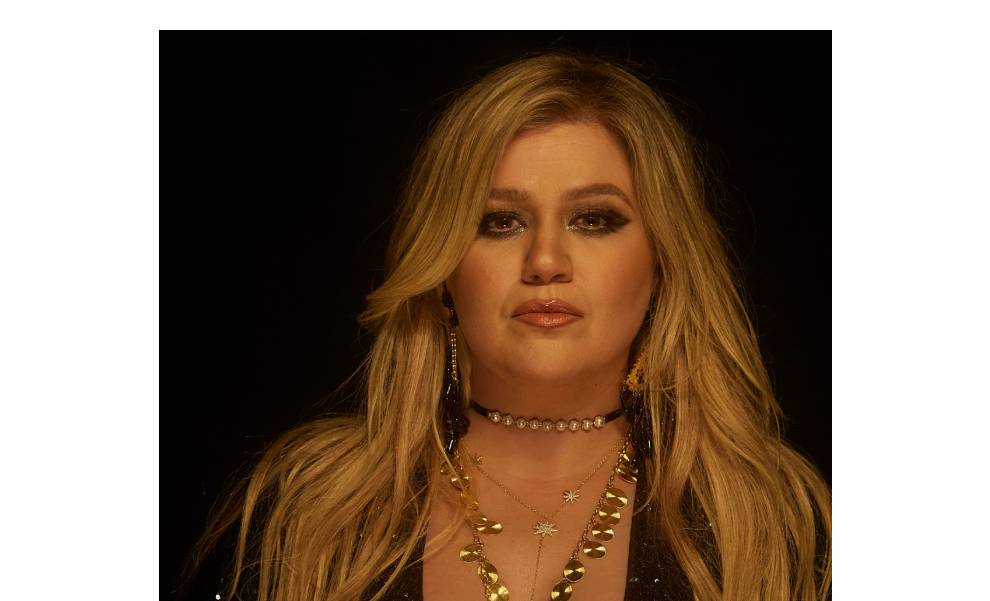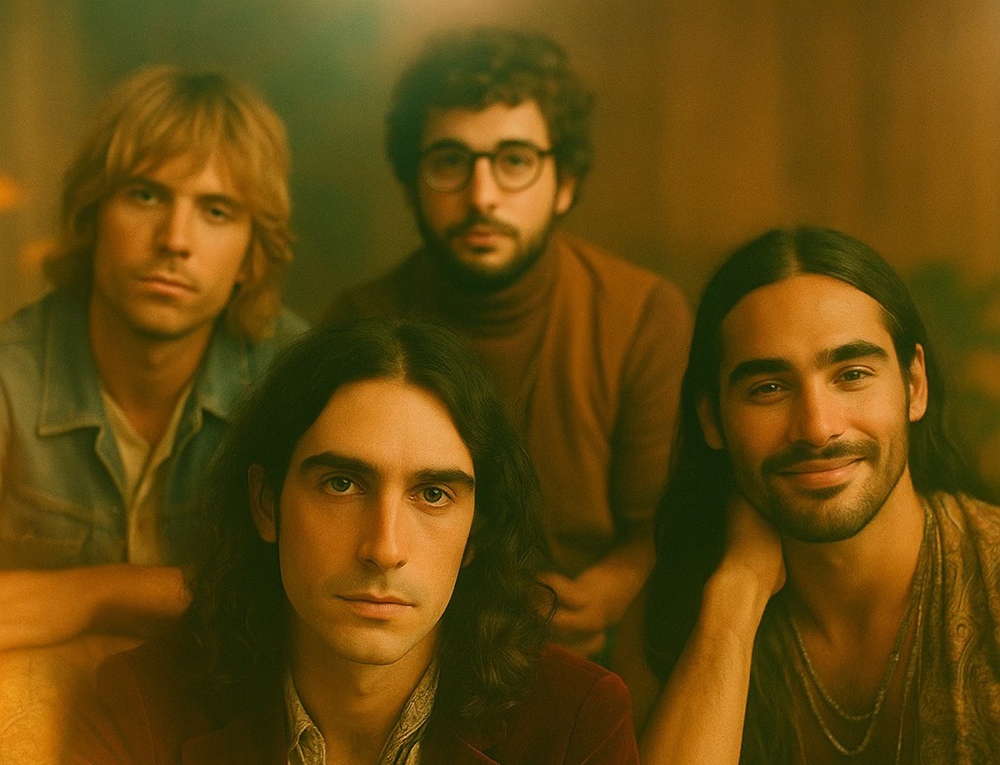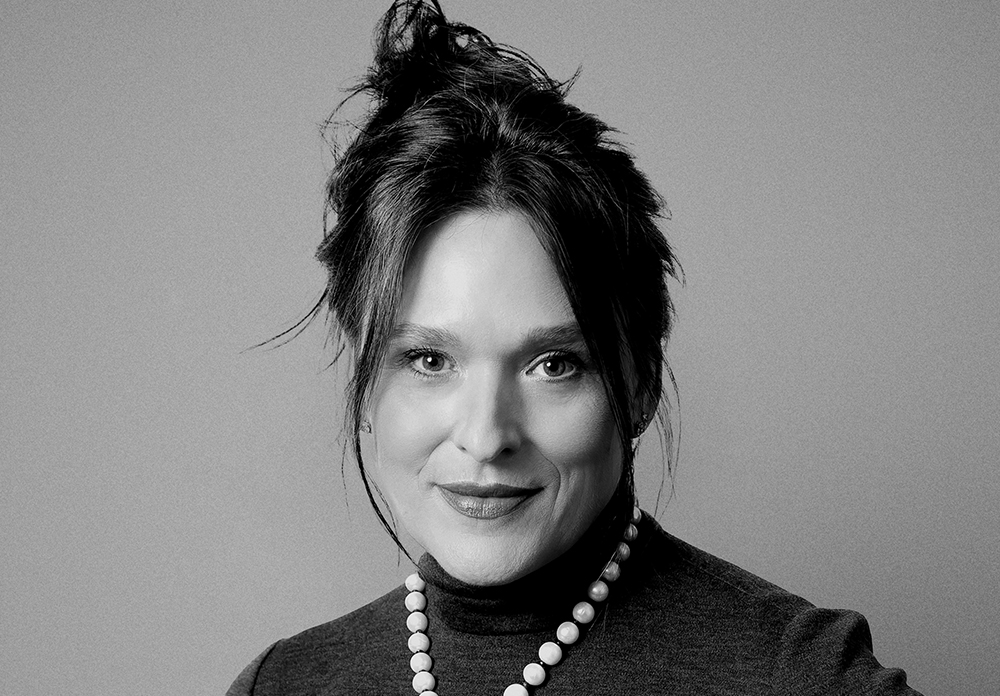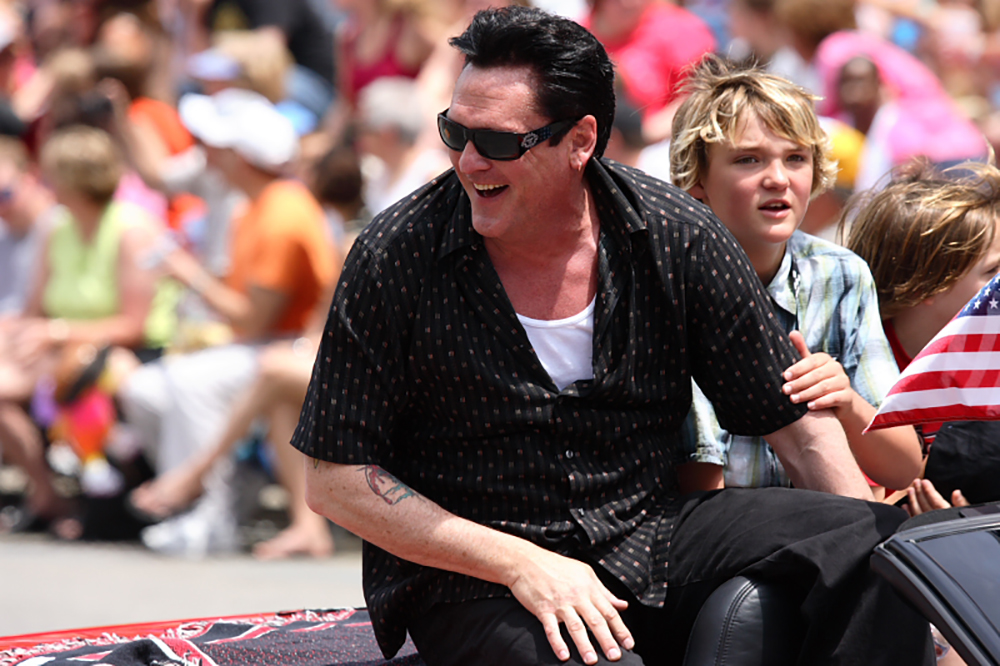This week In the Hot Seat with Larry LeBlanc: John Smith, Associate Director, Smithsonian Folkways Recordings
Most people don’t land their dream job, John Smith has as associate director of Smithsonian Folkways Recordings since June 11th of this year.
A division of the Smithsonian Center for Folklife and Cultural Heritage, Smithsonian Folkways is the nonprofit record label of the national museum of the United States, distributing close to 60,000 recordings of American and international music.
What could be described as “America’s National Museum of Sound” resides on the 2nd floor of an office building on Maryland Avenue near the National Mall in Washington, D.C.
Smith, an Olympia, Washington native, oversees all key production and business at the label, from A&R to production, marketing, and sales; working closely with staff, curator collaborators, and stakeholders to further the mission and ethics of Smithsonian Folkways.
Prior to his current executive position at Smithsonian Folkways, Smith had co-founded and operated Free Dirt Records which, since 2006, has released recordings of such folk-styled artists as Chumbawamba, Pokey LaFarge, Julian Lage & Chris Eldridge, Anna & Elizabeth, and Dori Freeman.
His current position marks Smith’s second run at Smithsonian Folkways.
His first term ran from 1999 to 2014 after he was hired as a marketing assistant. He went on to serve numerous positions including as head of sales, international distribution manager, and manager of operations for the sales and mail order division.
Folkways Recordings, created in New York in 1948 by record collector Moses Asch, specialized in traditional music; folk, blues and children’s music: and spoken word.
Its catalog contains recordings by such prominent American artists as Pete Seeger, the Carter Family, Woody Guthrie, Lead Belly, Bill Monroe, Doc Watson, Elizabeth Cotten, Reverend Gary Davis, Lightnin’ Hopkins, Alice Gerrard & Hazel Dickens, and by legendary children’s educator and performer Ella Jenkins.May1999
Folkways also released field recordings of aboriginal tribes in Australia, folk songs from Hungary; ambient sounds of steam locomotives; and audiotapes from the “Red Scare” of the 1950s, when Republican Senator McCarthy spent almost 5 years trying in vain to expose communists and other left-wing “loyalty risks” in the U.S. government.
In 1952, Folkways released “The Anthology of American Folk Music,” a monumental 6-LP box set curated by Harry Smith that fueled the American folk revival of the 1950s and 1960s.
After Moses Asch passed away in 1986, his family donated the Folkways’ catalog to the Smithsonian Institution, and the collection was relocated to Washington, D.C. Due to the Smithsonian’s novel agreement with the Asch family, every release from throughout the label’s history must remain in print, and be available to purchase
Smithsonian Folkways has since acquired numerous other significant record label collections, including Cook, Monitor, the UNESCO Collection of Traditional Music, and Arhoolie Records.
Smithsonian Folkways has also been signing new artists including Kala Kater, Lula Wiles, Anna & Elizabeth, Dom Flemons, Alash, Dan Zanes, and Iraqi oud player Rahim Alha. As well, the label is providing a home for recent projects by Laurie Anderson, Jesse Smith, and Rhiannon Giddens.
What are your duties as associate director at Smithsonian Folkways? You replaced Dr. Atesh Sonneborn who had been associate director for 20 years.
He started here in October 1998. I started (as a marketing assistant) in May 1999. He was one of the people who hired me along with Brenda Dunlop, the sales and marketing director. Atesh’s role was more on the scholarly side. He’s an ethnomusicologist and has his Ph.D.–in Music (Ethnomusicology)–from UCLA.
Okay, you aren’t an ethnomusicologist, but nevertheless, you did operate the Free Dirt label, and you have a music retail experience working at Camelot Music, and Backstage Music & Video while growing up. Plus there’s your first run working at Smithsonian Folkways.
Yeah, that is part of the change that Huib Schippers, our director, has in mind. He was looking for someone who has an institutional memory that knew how to run a record label. He’s more of a CEO, I suppose, and I’m more the general manager, day-to-day for the label.
Huib replaced Daniel Sheehy as curator director two years ago after Daniel (now curator emeritus) had led Smithsonian Folkways for 15 years. Huib’s history is impressive. A native of Holland, he lived for 13 years in Australia and had been the director of the Queensland Conservatorium Research Centre in Brisbane. An interesting pick, but he’s probably one of the few people in the world with such a combination of skills to be director and curator of Smithsonian Folkways.
Well, yeah and traditionally the director of Folkways has had an ethnomusicology background. I believe it’s a requirement of the position to have Ph.D. in ethnomusicology. But in terms of the associate director, the direction has changed a little bit. Traditionally, it was more of a research and scholarly position, but Huib wanted more of a operations person. Someone who had experience running a record label, and someone who could run the day-to-day so he could spend more times doing the things that he needs to do.
Someone able to address what is going on in music distribution today?
Exactly.
While Smithsonian Folkways has long had distribution and marketing structures in place, the inherent ways to monetize musical content has become more challenging in recent years. Obviously, your revenue stream has slowed, and it’s tougher to be profitable. Smithsonian Folkways has had to analyze how much income it can continue making from direct music sales, and how much monies can be attained from education, philanthropy, working with foundations and other partners, and sync licensing of its works. Today, everything is on the table. It’s about, “How do we make money, how do we survive?”
Yeah, and while staying true to our mission. That’s a big challenge, and when it comes down to it, it is really hard to find someone who can run a record label but also can stay true to the mission. There aren’t a lot of us out there. I happen to have a lot of history at Folkways that kind of pre-qualified me for the position, I suppose. Spending so much time marketing and trying to sell records, but at the same time staying true to the mission. That’s a challenge for sure. Not a lot of people can do that.
Will Smithsonian Folkways become more of an integrated music rights company by acquiring both recording and publishing assets?
That is something that we are certainly exploring; whether it’d be outright ownership of compositional copyright or just administering copyright. There are certainly some opportunities there. A lot of that has to do with how the sync license world works. A lot of music supervisors want one-stop (shopping).
Do you also license recordings as well? You seem to attain ownership and then determine what’s in the purchased catalog to work with.
When we know that we actually control the content, we will make it available for sync licensing. So film and TV producers that are looking for content that we have, if we own it, we will sync license it. That is a portion of the revenue that we generate here. I need to remind you that we are part of the Smithsonian. We are a unit within the Smithsonian Institution, but we are on the Trust side. We don’t get any Congressionally allocated funds. All of the money in our budget is self-generated. So we are not getting any help from any part of Congress or any part of the Smithsonian even.
That is the defining premise of Folkways. That the catalog will be available and be able to pay for itself. Essentially, you are in the recording business.
Yeah, exactly and that has changed slightly over time. There’s been instances where we’ve had our rent paid. There’s basic infrastructure that is covered but for the most part, we are on our own. We aren’t getting any help, and we have to operate like a business inside of a non-profit entity.
At the same time with changes in music distribution from LPs, CDs and downloads to streaming, revenues from recordings have dwindled. Smithsonian Folkways typically makes about $.70 per track. With streaming, it makes only $.04 per track.
Yeah, and that is why we are relying more and more on sync licensing. We are in the midst of developing other revenue streams. So potentially down the line, we may get into the publishing administration business. Maybe diversify our business model just a little bit. We definitely recognize that. But, at the same time, acquisitions of new labels means more tracks that we can stream; and yes, we are earning less per track overall just like everybody else, but our catalog continues to grow in a way that offsets some of that. It’s not going to offset all of it, but as our catalog continues to grow, we can offset a little bit of that.
I take it music publishing wasn’t attached to the Folkways catalog that came from Moses Asch in 1988.
No, it was not. That’s a relatively new thing. There are a few tracks that which we own the copyright to, but it has never been something that we have been active in.
Smithsonian Folkways didn’t have to be involved with music publishing for years because profits came from the recordings themselves.
Right, exactly.
Until the success of Joel and Ethan Coen’s film “O Brother, Where Art Thou?” in 2000, there really wasn’t much of a sync market available for period folk music recordings.
No, there wasn’t. But you’d be surprised by how many music supervisors are looking now for something very, very specific from a certain part of the world at certain times. That’s one of the great things about what we are doing with sync is that music supervisors, if they need something, and they need something obscure, chances are we will probably have it.
A bit overwhelming walking through the Smithsonian Folkways archives?
There are 60,000 tracks currently with more on the way.
Well, working at Smithsonian Folkways there’s an element I would think of doing “God’s work.”
I think so.
Well, when you are overseeing music by Woody Guthrie the Carter Family, Pete Seeger, Bill Monroe, Doc Watson, Elizabeth Cotten, Reverend Gary Davis, Alice Gerrard & Hazel Dickens, and The First Lady of the Children’s Folk Song, Ella Jenkins, that’s not exactly like overseeing Nicki Minaj’s “Queen” album.
Right. There’s purpose there. There’s meaning. Look I don’t want to put down Nicki Minaj. That’s very entertaining music, and it brings a lot of joy to people; but Pete Seeger has also brought a lot of joy to a lot of people, and I think that his message, his word, needs to be kept alive.
So for the upcoming (2019) release of “The Smithsonian Anthology of Hip-Hop and Rap,” you were right on top of that, were you?
(Laughing) Oh no. I certainly do not claim to be a hip-hop expert by any means. I will defer to my colleagues on that one.
The announcement raised a few eyebrows. The set apparently has 120 tracks.
“The Smithsonian Anthology of Hip-Hop and Rap” is a 9-CD box set. That’s a big one. That’s one of those great collaborations with the National Museum of African American History & Culture. The collaboration there is wonderful. I can’t speak to the idea behind that of how that got started.
That had to be years in the making.
Yeah, if I recall this is something that got started with my former boss here, Richard Burgess. I think that he spearheaded this, and spearheaded the collaboration with the National Museum of African American History & Culture.
How many years ago was that?
it must have been 6 or 7 years ago.
[From 2001 to 2015, Richard Burgess, co-founder and co-lead singer of the ‘80s English synthpop band Landscape, was the associate director of business strategies at Smithsonian Folkways. He currently serves as the CEO of the American Association of Independent Music (A2IM), the trade association that represents independent record labels in the United States.]
Smithsonian Folkways has three other box sets coming in 2018?
Yes, we do. All CD sets.
The New Orleans Jazz and Heritage Festival is celebrating their 50th anniversary next year, so Smithsonian Folkways is putting together a box set of 50 recordings, with a 200-page book of photos and essays.
We are working on that 4-CD set for a May 10th release. We have the Pete Seeger box set on May 3rd. His 100th birthday. That is a 5-CD set. Then, earlier in the year back in January and February, we have a set called “The Social Power of Music” which is 4-CD box set exploring, from all over the country and world, that deals with social awareness in all of its forms.
What else is on your plate right now?
Just getting (Canadian banjo player and songwriter) Kala Kater ready for the world. Her album “Grenades” comes out Oct. 26th. Working on an album by Lula Wiles (the Maine trio of multi-instrumentalists). That is coming in January. Working on an album with Rhiannon Giddens (a founding member of the Carolina Chocolate Drops) that is tentatively slated for February, 1st 2019 release.
Also, spending quite a bit of time on some acquisitions of record labels that I can’t mention to you at the moment. We have in the pipeline at any given time a good large handful of record labels that are pending. I think that there are more on the docket now than in years past. In the next 5 years, there are going to be quite a few acquisitions that I think will go through. That’s very exciting. To build our catalog. Who knows? Within the next 5 or 10 years we could be seeing our track number go from 60,000 to–I don’t know depending on what labels we go through with—maybe, we will get up to 100,000 (tracks) some day.
So Smithsonian Folkways is not only reissuing archival music but also signing newer artists like Kala Kater, Lula Wiles, Anna & Elizabeth, Dom Flemons, Alash, Dan Zanes, and Iraqi oud player Rahim Alha, as well as providing a home for interesting upcoming projects from Laurie Anderson based on the Tibetan Book of the Dead, with Tibetan musicians; and from Jesse Smith, the daughter of Patti Smith, working within the spoken word tradition.
Yeah, just because we are signing younger like artists Kaia Kater and Lula Wiles doesn’t mean that we are not signing other types of artists too. Those just happen to be artists that people tend to focus on because they are a little bit outside of what Folkways has been doing the past 10 years or so.
Vinyl remains about 2% of Smithsonian Folkways’ business.
Yes. We have been doing vinyl for a number of years, but most of it has been licensing out. It has just been recently that we have been pressing our own, and releasing them on our own. For example, we have two different series . We have our new releases. So Kaia Kater and Lula Wiles will out on vinyl. The Dom Flemons (“Black Cowboys”) album came out earlier this year, and the (double) vinyl edition will be coming out in a couple of weeks (Oct. 5th); and then we are doing some reissues. The most recent reissues in our series have been Barbara Dane (“Barbara Dane: Hot Jazz, Cool Blues & Hard-Hitting Songs, a 2-disc retrospective); Woody Guthrie’s “Struggle” (originally released 1976); Lightin’ Hopkins’ self-named release (first issued in 1959); and Joseph Spence (“Bahaman Folk Guitar: Music from the Bahamas, Vol. 1,” first released in 1959), if you are familiar with him.
In reviewing the Joseph Spence release in No Depression (July 19, 2018) staff reviewer Grant Britt wrote, “This is the stuff that makes Ry Cooder do backflips.”
Joseph Spence is one of my all-time favorites. A lot of people say that about his recordings from the Folkways’ collection. His file is just…I can’t get enough of it.
(The late Bahamian guitarist and singer) Joseph Spence has been compared to the great blues masters. He inspired such musicians as Ry Cooder (who has recorded several of his arrangements), as well as Taj Mahal, John Renbourn, and David Lindley. Does Smithsonian Folkways get involved with more mainstream artists or with music celebrities like Ry Cooder who were influenced by some of these folk pathfinders?
Well, I guess it depends on your definition of celebrities. Yes, we do that sometimes. There are people who want to back what we do, who want to lend a nice voice to it or at the very least a quote. That happens sometimes. A good example of a natural project is depending on whether you consider Rhiannon Giddens famous or not. My opinion is that we have kind of stick close to Moses Asch’s ethos in that you don’t necessarily put out famous people or focus more on the more traditional kind of thing. I like to think that there is room in this space for working with more mainstream artists.
Nonesuch Records lent Rhiannon Giddens to Smithsonian Folkways.
Every once in a while there is a record label that people like Rhiannon Giddens or Ry Cooder are signed to and they will release them temporarily of their contract just to do a project that might be more suitable and more fitting for what we are doing. We are a little bit more open to it now than maybe we have been in the past. I would say that generally speaking, we’re open.
[Rhiannon Giddens co-produced (with Dirk Powell) the album “Songs of Our Native Daughters” for Smithsonian Folkways. Written and recorded with fellow artists Amythyst Kiah, Leyla McCalla, and Allison Russell, the album confronts the ways society is culturally conditioned to avoid talking about America’s history of slavery, racism, and misogyny.]
Do you look with some admiration to “a collector’s record label” like Bear Family Records in Germany that specializes in reissues of archival country and western, rockabilly, surf, New Wave and Americana? As you know Bear Family, founded by collector Richard Weize, has been in existence since 1975. What started as a small record label in Bremen, Germany became a worldwide trademark throughout the decades.
Well, they have been just doing it so well for so long. Bear Family has a fantastic brand just like the Smithsonian Folkways does. Just like Dust-to-Digital in Atlanta has. Like a number of these organizations, we have been doing this for a long time, and everybody has their own niché of doing things. We definitely recognize the importance of folks like Bear Family, and Dust-to-Digital.
There’s also Light in the Attic Records established in 2002 in Seattle, Washington by Matt Sullivan. Among its releases are high-quality classic recordings by the Last Poets, Jackie Mitoo, Betty Davis, Serge Gainsbourg, Jim Sullivan, Jane Birkin, and the Monks.
Oh, Light in the Attic, they are amazing. They really are.
Bear Family is widely known for its extravagant box sets. It has issued 12 and 20 CD box sets of Lefty Frizzell, one of the most influential country singers in history, and they do sell in limited numbers.
A lot of that is because people know that Bear Family is going to put out good quality stuff, even if they think that they don’t need 12 CDs of Lefty Frizzell. I think that people just know that whatever it is that it is going to be good. Bear Family is a pretty small organization. That’s the thing about some of these organizations. Dust-to-Digital is just two people. That’s oversimplifying it, perhaps, because they do have help. But generally, these are very small operations.
Within Smithsonian Folkways is there a group or committee curating releases or is it up to individuals there?
We have a committee. With me being on the A&R side, I sort of head that process but I certainly don’t claim to be an expert on a lot of things.
How many people on the committee?
There are five or six. If there is something that comes in that none of it is in our wheelhouse then we go outside. It’s not that they (an outside consultant) becomes part of the committee. It is just that we get their opinion. So the committee is very fluid. It’s about talking to other folks, other experts. It’s not exclusive at all. It’s very inclusive.
Is the focus of the committee on catalogs the Smithsonian Folkways owns or has rights to or is it also discussing new artists that might be signed?
It is mostly new projects that come in, and it’s not necessarily artists that come in it’s projects that come in.
Somebody pitches you?
Yes, in fact, you can go to our website and put forth a proposal. We are very open about that. We want to hear from people with their ideas.
You sound as if you are a musical generalist that can garner advice from other musical experts as you need it.
Oh yeah, it’s beautiful. When it comes to…when we say world music for example; world music, meaning music from outside of North America, there are so many different people in our community, in the ethnomusicology community, the scholarly community, there are a lot of people to draw upon, and it’s fun to collaborate that way. It’s been a long time since I worked with him, but Burt Feintuch (professor of folklore and English, and dir. of the Center for the Humanities at the University of New Hampshire), the gentleman who produced “The Heart Of Cape Breton” (2002), there are great people like that out there that aren’t in the music industry who just have this passion for documenting wonderful music like Cape Breton fiddling. Getting their point of view is wonderful, as is collaborating with them.
America has been quite fortunate to have had such music curators as Moses Asch, Harry Smith, John and Alan Lomax, and those people who founded such seminal folk-based labels as Arhoolie, and Rounder. What might have disappeared has been captured and archived. Do other countries have people of similar stature also keeping folk music traditions alive?
Yes, there are actually. There’s an English artist (and traditional music specialist), Sam Lee doing a lot of song collecting. Among other things. But he’s also a performer doing his own music, very much inspired by the songs that he’s finding in the British Isles, and beyond in Western and Northern Europe. I would say that he’s doing some of that work. He is such a fantastic artist and musician. I would put him in that category.
There are also many cultural organizations, and ethnographers in the U.S. pursuing similar goals with music.
There are other organizations doing similar work I guess. It’s not quite the same. The one that comes to mind is the (10 volume) Music of Central Asia series which was funded by the Aga Khan Foundation. That is some of my favourite stuff in the Folkways’ collection. There is some really intense music there. Just beautiful.
Smithsonian Folkways partners on projects as with the Aga Khan Foundation. I’m also thinking of African American Legacy Series co-sponsored with the National Museum of African American History and Culture; and the “Tradiciones/Traditions Series” of signature music from Latin America and Latino USA, co-sponsored with the Smithsonian Latino Center.
There are outside partners and sometimes the partners are within the Smithsonian too. Yes, the Latino series that Dan Sheehy put together was sponsored in part by the Latino Centre here at the Smithsonian. The way those sorts of partnerships happen is they essentially provide us with grants. It interesting sometimes how the Smithsonian works in its partnering. Some units will acquire funding, and they will then give them (funds) to other units. It’s a little more complex than that. I am simplifying it, but that is essentially what’s going on. The Latino series is 50 recordings deep at this point. A lot of that was in partnership with the Latino Centre here at the Smithsonian. The African American Legacy series was very similar and, as you mentioned with Aga Khan Foundation, we will partner with outside organizations as well.
In 2003, Smithsonian Folkways partnered with the American Folklife Center for the “Save Our Sounds” project in order to preserve recordings like those made by Thomas Edison on wax cylinders.
That was in a period of time when I was not as active at Folkways.
The Ralph Rinzler Folklife Archives now does something similar.
The Ralph Folklife Rinzler Archives is part of the Center For Folk Arts and Cultural Heritage which is the unit which essentially houses Smithsonian Folkways recordings. Yes, it’s very convoluted, but the unit as the Smithsonian, the Center For Folk Arts and Cultural Heritage among other things are the Rinzler Archives, Smithsonian Folkways Recordings, and the Smithsonian Folk Life Festival. A lot of recordings from the Smithsonian Folk Life Festival have ended up in some of Smithsonian Folkways’ releases.
How much of the Folkways collection is digitized?
That’s more a question for the archivists. I’m not quite sure of the percentage is but it’s a good chunk of it. When I say a good chunk of it that is the Folkways’ collection. The original collection that came in that started everything. We acquired Arhoolie Records in May 2016, and yes almost the majority (300 titles) of the Arhoolie (650 album) catalog is available on Spotify and all of that, but there are a lot of original source tapes that have not been preserved, and they probably have not been stored in the most ideal location. I can’t imagine Chris (Arhoolie founder Chris Strachwitz) having them in climate controlled rooms. God bless him, but I don’t blame him for that. That’s expensive getting it done right. There’s definitely a science behind it too. People go to school for this sort of thing, and we’ve got the people here to do that, but it’s a lengthy process. With Arhoolie, we are only two years into that acquisition, and none of the tapes have been preserved yet. That is a priority for us. It is not an easy task to acquire a label. We do it because we think that it is important. But there’s a lot of work that goes into that. Not just the IT research but also the actual preservation of the tapes, the documents and what have you.
While there might be limitations put on collections by donors, without question copyright is an impediment to preservation. Copyright law for sound recordings for sure is an issue. The Digital Millennium Copyright Act in 1998 restricts the number of copies that can be made in the preservation process, and recordings must be deteriorating which is a violation of any principle of archiving. You want to reproduce something before it deteriorates.
It makes it very challenging, absolutely.
Since Folkways was acquired in 1988, Smithsonian Folkways has acquired at least 12 other record label collections, including Cook, Monitor, the UNESCO Collection of Traditional Music, and, as you just mentioned, Arhoolie Records.
We are acquiring what are not only new labels for us but also labels that are culturally historically significant. Labels that we feel need to be kept alive for one reason or another. Arhoolie, for example, is such a special label. That’s a no-brainer right there. That is such a treasure trove of great material.
How does Smithsonian Folkways come to acquire catalogs? Certainly, the owners of many of these catalogs have aged or retired or have passed on. Many of them have not digitalized their catalogs—these are mostly analog master recordings—but as the label owners get older they want to preserve their life work. When do people come to Smithsonian Folkways? Chris Strachwitz was 85 when he sold Arhoolie.
Well, sometimes we come to them. With Arhoolie that was more of a mutual thing. Dan Sheehy was good friends with Chris, and they had a good relationship. It was something that was discussed over the years. “Hey, maybe, this is a good place for when you are ready to move on.” In some cases, the conversations starts quite a long time before it (a sale) actually happens. There are some labels out there that are a perfect fit for Folkways that we may be having conversations with informally. They aren’t ready to give it up yet, but we are putting a bug in their ear to remind them that this is a good home. That we will keep things alive, and preserve everything.
In some cases, if the label owner passes on, their family isn’t prepared or even knowledgeable about what to do with what they’ve inherited.
Well, yeah that is certainly the case. Another challenge is that sometimes the documentation of intellectual property, who actually has the rights, is a little bit gray. It’s not clear. That ends up being a more frequent challenge for us. Even with Arhoolie, such an established label, there was an occasional title where the documentation was a little bit fuzzy or wasn’t exactly the right documentation. We have to dot our Is and cross our Ts here at the Smithsonian being a federal agency. We have to get it right, and there are ethical issues as well. We want to get it right. We want to make sure that the people that are due royalties get paid properly.
You first came to Smithsonian Folkways as a marketing assistant in 1999.
Way back, yeah. I did come in as a marketing assistant. I got my dream job at age 24. I was very lucky to work here. I had a very idealistic outlook on things. I wanted to work in the music industry, but I also knew that it (the music industry) was kind of a cutthroat, slimy sort of operation. So being able to work at a non-profit record label, an entity that had a mission, and that it was putting out music from under-heard voices, and what not, that’s a pretty important thing.
The day you started at Smithsonian Folkways, as you walked through the racks of recordings, what was your impression?
There’s a lot of work to do. This place is messy you know. There’s a lot of stuff around here. We are not in a fancy Smithsonian building. We are in an office building in DC. It is just south of The National Mall. Like I said, it was my dream job. I was thinking about what an amazing place this was going to be. I was also thinking, “What am I doing here in Washington, D.C.? I am a West Coast person through and through.” It was sort of a cultural shock moving from Seattle to Washington, D.C.
Were you then married?
No. As I said, I was only 24. I packed up my VW camper van with everything I owned. They asked me when could I start. I said, “I could probably be there in a couple of weeks.” I literally packed up my van in a few days, and drove across the country with everything that I owned. At that point I didn’t want to own anything more than what would fit into my van. So it was perfect.
The question is what type of turntable did you bring with you?
(Laughing) I had a Numark DJ turntable because I had been a nightclub DJ for a couple of years. A lot of the vinyl that I had were 12-inch singles. I still have all those for some reason. I don’t know why but…
After you arrived, you did marketing, but you went on to work in sales and international distribution. A different distribution world existed then compared to today in dealing with Smithsonian Folkways releases?
One of the first releases that we put out was “Taquachito Nights: Conjunto Music from South Texas” (1999), and there were opportunities to put that in stores In Texas, especially. You know how Texas is. It’s its own little market. Sorry not little, big. There were all of these regional distributors more so than some of the other regions in the country at the time.
Those regional music distribution networks have virtually disappeared.
It’s all disappeared, and it’s not like “Taquachito Nights” sold a ton, but you could count on a couple of thousand units to be sold, at the very least. Now with something like that I don’t think you could move more than a couple hundred units physical. You could possibly do a lot of outreach to some of the small communities in Texas, but that is so labor intensive. That’s one of the challenges with being a label today, you have to work three times as hard to get the results that you once did even a couple of years ago. That is an obstacle in educating a younger generation today about non-mainstream music.
During tough economic times, the one thing that tends to be dropped by the government is support for the arts including arts education programs in public schools which have largely fallen away. Several generations haven’t had a comprehensive arts education. Some arts organizations have tried to supplant this, but there is nothing like the curriculum-based connected programs once offered by schools.
We definitely see that in our sales here at Folkways too. Just at a sales point
When I was in school we had music classes where I was exposed to folk, Broadway, and classical musics. I’m now quite interested in Museum in a Box which is essentially a mini interactive exhibit that can be sent out to schools and other organizations that serve kids.
(Each Museum comes with a Raspberry Pi computer, a speaker, an amplifier, and a near-field communication (NFC) reader. Labels, museums and cultural institutions can then add their own objects for kids to learn about using that technology. Students can place these objects on top of the box, triggering the NFC reader to start playing a recording related to the object.)
Yeah absolutely. One of Folkways’ priorities, one of their focuses of genres ever since Moses Asch started the label has been children’s music. One of the pioneer artists of that genre Ella Jenkins was very much about going into schools, and educating people about that sort of (folk music) content, telling stories about those types of artists, playing their music, and playing her own original music while being engaging, and being accessible. That just doesn’t happen as much anymore. There are a lot of children’s musicians out there, but I don’t know if they are focusing a lot of attention on educating the kids about what (music) used to be out there, and what is their history I guess.
Ella Jenkins’ repertoire drew from cultures all over the world, and was in different languages, and included nursery rhymes, holiday songs, bilingual songs, African-American folk songs, rhythmic chants, and original songs. She promoted greater cultural awareness, and exposed a generation to diverse cultures.
Ella Jenkins is still one of our top-selling artists, and for the longest time, she was the top-selling artist. She even sold more than Woody Guthrie, and that was because how much Moses was able to penetrate the children’s market with great content like with Miss Jenkins. I just visited her a little bit ago. She just turned 94 on August 6th. Man, she is such a special woman. Part of what I did during my earlier days at Smithsonian Folkways was that I would go to children’s music conferences, and I would literally have to be her bodyguard because she was so popular at these conferences. She would be walking from workshop to workshop and she would get mobbed by pre-school teachers. I always tell the story of how difficult it used to be to tell pre-school teachers how to form a single file line to line up to get autographs of Miss Jenkins. The fact that they did that all day with their kids but they couldn’t do it themselves was quite amusing.
Ella Jenkins was prominently featured on such TV shows as “Barney and Friends,” “Mister Rogers’ Neighborhood,” “The Me Too Show,” “Look at Me, and “Sesame Street.”
Absolutely, yes. That had a big effect.
She received lifetime achievement awards from both ASCAP (1999), and the Grammy Association (2004).
That’s correct. She’s received a whole bunch of awards. She’s very much recognized as “The First Lady of the Children’s Folk Song” for sure.
Starting in 1957, Ella Jenkins released over 40 albums on Folkways. Are most of those recordings still available today?
They are all available. I think she has 42 recordings, and two DVDs.
What’s her best selling album?
“Multi-Cultural Children’s Songs” (1995). It is the #3 or #4 all-time best seller of the Smithsonian Folkways list. Not far behind it is “You’ll Sing a Song and I’ll Sing a Song” that came out in 1966.
You launched Free Dirt Records In 2006 while working at Smithsonian Folkways?
Free Dirt Records was started between me and Erica Haskell who is now (an associate professor) in the ethnomusicology department at the University of New Haven.
Free Dirt Records started with you and Erica collaborating on a box set of spoken word recordings by the late Utah Phillips. Afterward, you two decided to create a label focusing on young artists making traditional music, and also to showcase overlooked genres like spoken word.
Yep. She and I produced that recording. Spent a good 5 years working on that with him. Utah Phillips was my mentor. He has had a huge influence on the way that I view the world. I was lucky enough to spend 5 years working with him putting together this anthology and Erica, my business partner who had actually grown up with Utah. We then started Free Dirt Records.
It’s hard to believe this American labor organizer/folk singer/storyteller, once described as the “Golden Voice of the Great Southwest,” has been gone a decade.
It is. But he had a huge effect on how I view the world and what I do now.
I loved the pair of Utah Phillps’ recordings with Ani DiFranco (“The Past Didn’t Go Anywhere,” Righteous Babe Records, 1996; and “Fellow Workers,” Righteous Babe Records, 1999.) “The Past Didn’t Go Anywhere” caught my ear first.
On Righteous Babe. That’s how I found about him. I didn’t know much about Utah Phillips because I hadn’t met Erica at that point. I was listening to Ani DiFranco and Utah Phillips at Backstage Music & Video, the independent record store I was working in at the time in the Ballard neighborhood of Seattle. We listened to that over and over, and I was like, “Who is this guy. This guy is amazing. He has a lot of crazy, often amazing things, to say.”
Then when I had an opportunity to meet him I was like, “I listened to you for years.” It was amazing that I even had the opportunity. Those were the sort of opportunities that were popping up when I first started working at Folkways. It just blew my mind and it still does working with people like John Cohen (founding member) of the New Lost City Ramblers. Meeting and working with so many different people that have had such an effect on so many people in so many different ways.
(Recalled Ani DiFranco, “I met Utah in Philly, I was 20, had a shaved head and I looked like a little punk, which is unusual on the folk scene, so I got an attitude. Then I walked into the kitchen, and there was Utah sitting there, and he just cleared the air with his presence and his humor, and I fell in love with him immediately.”)
What was intriguing about Utah was that as a card-carrying member of the Industrial Workers of the World (aka the Wobblies), the first large labor union in the U.S. to organize as an industrial union instead of according to craft, he was an unsurpassed interpreter of Wobbly protest tunes, including “Hallelujah, I’m a Bum,” “Union Maid,” “I Dreamed I Saw Joe Hill Last Night,” “Solidarity Forever,” “The Preacher and the Slave,” and “Bread and Roses.” Without him, many of these songs may have been lost or forgotten. Not to mention all of the songs he sang about the railroad.
Yep. Absolutely.
(Since 1909, the IWW has collected its official songs in the “Little Red Songbook.” The latest edition was printed in 2010. The 190 songs included in editions from 1909 to 1973 are collected and annotated in “The Big Red Songbook,” published in 2007.)
To me, Utah Phillips was as important as Woody Guthrie, and Pete Seeger in keeping folk music traditions alive.
Well, I would wholeheartedly agree to that. I obviously had the pleasure of working with Utah one-on-one for so many years so I am a little bit biased. Not to discount Woody or Pete obviously.
How is it that neither Free Dirt nor Smithsonian Folkways acquired Utah’s 4-CD compilation “Starlight on the Rails” when it was released in 2005?
Well, it is kind of a long story. Utah needed some help putting together this anthology, and Erica and I just dug in. It was a labor of love. It was outside of anything that was going on at Folkways. We were doing it just because we just loved Utah, and we felt that it was just a great opportunity to do it. So when we finally finished it, and the time came to give it to someone to release it….at the time we wanted to put it out on Smithsonian Folkways, but for one reason another it just couldn’t happen. It would have been a perfect fit, but there were some other circumstances that prevented it from happening. So we ended up putting it out with (Indigo Girls) Amy Ray’s label (Daemon Records). Then after Erica and I finished that we were like, “Well, this is fun. Let’s keep doing it.” That’s when we founded Free Dirt Records in 2006. Yeah, we had finished the project in 2005 and then started the company after that. Mind you I was essentially working at Smithsonian Folkways, and then we started our label. I was doing that for a number of years. Doing both things.
Free Dirt’s official first release was “A Secret Gate” (2006) by the traditional Bosnian world-fusion musical ensemble Mostar Sevdah Reunion playing almost exclusively sevdalinka (a traditional genre of folk music from Bosnia and Herzegovina) fused with contemporary musical styles. A natural debut for the label given that Erica had been in Bosnia and Herzegovina doing research on the politics of music in post-war Sarajevo.
Yeah, that’s was Erica’s focus. Her specialty was music and culture from Bosnia. I’m way oversimplifying her studies and her dissertation. It was sort of the study of post-war cultural funding. She spent a number of years in Bosnia studying and that’s her dissertation. So we were interested in releasing some recordings from that part of the world. Free Dirt’s first official release was Mostar Sevdah Reunion’s “A Secret Gate.” Our second official release was Mostar Sevdah Reunion and Ljiljana Buttler with “The Legends of Life.” We had big expectations of bringing the band over, and touring the States for the first time and boy did that go horribly wrong. We did our best but we just never got them to come over.
Immigration issues?
Among many, many things. Infighting with the band, and management. Things like that. It is your classic story. We didn’t know any better. We thought that we were going to do it because of Erica’s connections, and her ability to know the culture and all that, but that didn’t help us out one bit at all. But they were great recordings and we were glad to put them out. It was a license which has long expired. But, yes those were our first recordings on Free Dirt.
What does your personal record collection look like?
One of my inspirations is the Bloodshot Record label (in Chicago). I love the traditional meets punk ethos that they have garnered over the years. I started listening to some of the early stuff that Bloodshot Records was putting out, like Split Lip Rayfield or Austin’s the Meat Purveyors, people taking bluegrass and acoustic level to the next level. That is very much inspirational to me. I still continue that (interest) to this day. I like the edgy Americana stuff. Stuff that isn’t slick. Stuff that is…..
Like the Bottle Rockets?
Yeah, stuff like that but at the same time it’s funny but I also listen to and have a deep love and appreciation for acoustic music, folk music, bluegrass, blues, and things like that. I also like to mix it up a little bit.so every once in a while I have to go back, and listen to the heavy rock stuff I grew up with.
All the local grunge rock?
That is still very much part of me. It’s very funny to go from Pete Seeger to that realm, but I like to bridge that gap.
How big is your personal music collection?
Oh, it’s not that big. I have maybe a few thousand CDs and maybe 600 or 700 LPs.
It sounds as if your wife has said, “Your music is not taking over our house.”
Yeah, it gets to a point…there’s some folks here who have gotten away with that. Jeff Place, (curator and senior archivist), his whole basement is dedicated to his record collection. I couldn’t get away with that. While my wife appreciates what I do I think she appreciates that I don’t have a big record collection. I just recently moved back to Folkways. I started up here again in June. Before that, I was running Free Dirt. We had a small office, but our storage had gotten out of hand. So a lot of that stuff is still in our house. We are in the midst of moving it out, and putting it in storage.
Are you still operating Free Dirt?
No, no, no. But it’s still active. The Free Dirt employees took it over. Erica is still an owner but a silent partner. I retain my part ownership in Free Dirt, although I receive no compensation of any kind from it. Essentially, the employees that were working for me before I moved onto to Folkways are running it. They are putting out some great stuff. They got hold of some Alice Gerrard and Hazel Dickens home recordings. The album “Hazel Dickens & Alice Gerrard – Sing Me Back Home: The DC Tapes, 1965-1969” is coming out in a few weeks (Sept. 21st). The Hazel & Alice project would have been perfect for Smithsonian Folkways, but Free Dirt had signed the agreement with Alice about a year ago, and it was just too far along to bring it to Folkways when I made the move.
Where exactly are you from?
I grew up in Olympia, Washington. I was in high school in ’91 and ’92 and it was a very special time living there, and experiencing that sort of (grunge) stuff.
Did you go to college?
Yeah, I went to the University of Washington (in Seattle). At the time I was studying geography but I never finished. The first time I dropped out was in 1994. I never finished. There were just too many things that I wanted to do. School got in the way of what I was doing.
You worked at KAOS, the hybrid college-community radio station at Evergreen State College in Olympia.
That’s another place that helped form my ideals. Being at the radio station of one of the most liberal schools in the world. KAOS, I learned a lot there. Then eventually I moved on to KBCS the community radio station at Bellevue College that broadcasts “Democracy Now” program now (fed to Pacifica Radio affiliates all over the country). I had my own show at KAOS, but at KBCS I didn’t. I was the PM drive-time host on Monday afternoons. There was a program called “The Daily Planet.” We basically just played anything we wanted from around the world focusing on nothing in particular. It was variety. “Make sure all 7 continents are represented, even Antarctica.”
Larry LeBlanc is widely recognized as one of the leading music industry journalists in the world. Before joining CelebrityAccess in 2008 as senior editor, he was the Canadian bureau chief of Billboard from 1991-2007 and Canadian editor of Record World from 1970-80. He was also a co-founder of the late Canadian music trade, The Record.
He has been quoted on music industry issues in hundreds of publications including Time, Forbes, and the London Times. He is co-author of the book “Music From Far And Wide,” and a Lifetime Member of the Songwriters Hall of Fame.
He is the recipient of the 2013 Walt Grealis Special Achievement Award, recognizing individuals who have made an impact on the Canadian music industry.

